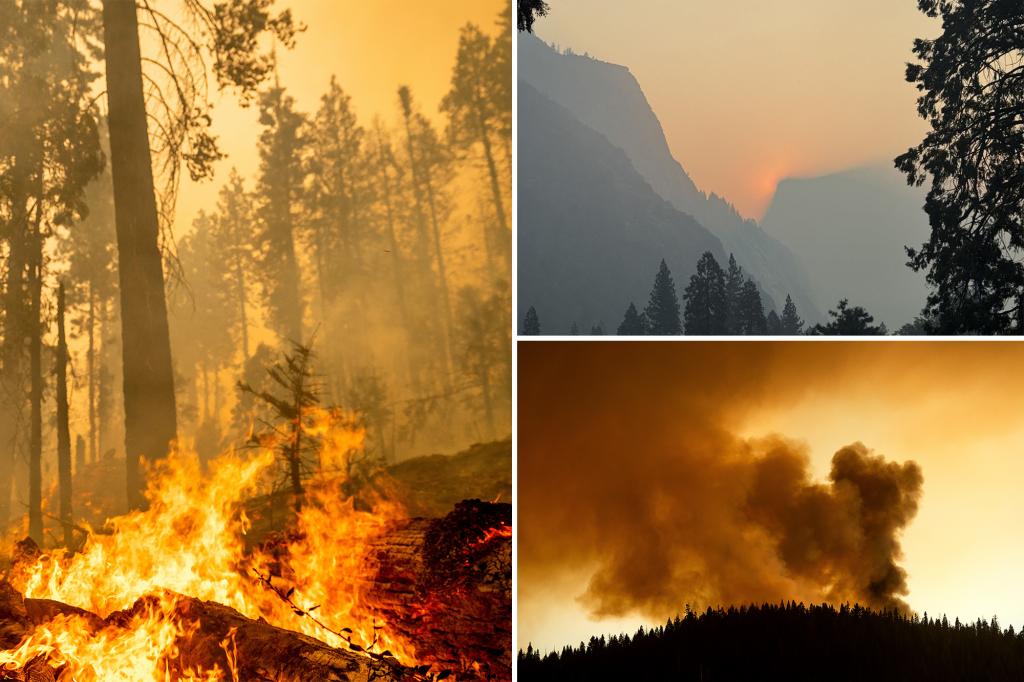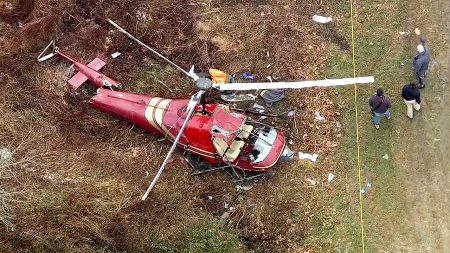Battling the Garnet Fire: A Struggle Against Smoke and Flames in the West
In the heart of California’s Sierra National Forest, a fierce battle continues against the lightning-sparked Garnet Fire, which has now engulfed over 56,000 acres of land. This wildfire, burning northeast of Fresno since August 24, is testing the limits of firefighters working around the clock to protect both communities and natural treasures. Though Tuesday brought some positive news with the fire now 15% contained and crews successfully holding containment lines in challenging areas, the struggle is far from over. The Dense Smoke Advisory covering parts of Central California and western Nevada serves as a stark reminder of the fire’s far-reaching impact, as thick plumes reduce visibility and threaten public health in communities miles away from the actual flames.
The smoke’s journey doesn’t end at the fire’s edge—it travels extensively, creating a secondary crisis for regions not directly threatened by flames. Yosemite National Park, one of America’s most treasured natural landscapes, reported “hazardous” air quality on Monday—the worst possible rating—though conditions improved slightly to “unhealthy” by Tuesday evening. Meanwhile, communities as distant as Hawthorne, Nevada, continue to experience unhealthy air quality, while Esmeralda County, Nevada, nearly two hours away, faces conditions unsafe for sensitive populations. The National Weather Service office in Hanford, California, has warned that smoke could reduce visibility to a mile or less at times, creating dangerous driving conditions in affected areas. The Dense Smoke Advisory remains in effect through Wednesday morning for several California communities, including Auberry and Cedar Grove.
The science behind smoke’s movement helps explain its widespread impact. As the Environmental Protection Agency notes, “The intense heat generated by an active wildfire drives smoke high into the air where it remains until it cools and begins to descend.” When this smoke eventually moves downward to ground level, it becomes more diluted but often more widespread, affecting communities far from the original fire source. This explains why people in Nevada are feeling the effects of a fire burning primarily in California’s Sierra National Forest. Unfortunately, experts don’t expect air quality to improve significantly until either wind patterns change or firefighters achieve greater containment of the blaze.
Among the firefighters’ priorities is protecting McKinley Grove, home to historic giant sequoia trees that stand over 230 feet tall. These ancient giants, some of California’s most iconic natural wonders, now face threat from both direct fire damage and the prolonged effects of smoke and ash. The struggle to save these trees represents just one aspect of the complex challenge facing fire crews, who must balance ecological preservation with community protection and their own safety in dangerous conditions. The lightning strike that sparked this fire on August 24 has now created cascading consequences across multiple states and ecosystems.
The health implications of this extended smoke exposure are serious. The National Weather Service reports that poor air quality contributes to an estimated 100,000+ premature deaths in the United States annually. When air quality reaches “hazardous” levels, as it did in Yosemite National Park on Monday, breathing the air can cause problems even for healthy individuals, while those with respiratory conditions face even greater risks. The smoke contains a complex mixture of particulate matter and chemicals that can irritate lungs, trigger asthma attacks, and exacerbate existing heart and lung conditions. For communities living under these conditions for days or weeks, the cumulative health impact can be significant.
As containment efforts continue, affected communities must navigate both immediate safety concerns and longer-term health considerations. Local officials are encouraging residents to limit outdoor activities, keep windows closed, use air purifiers when available, and check on vulnerable neighbors. The Garnet Fire serves as a powerful reminder of wildfire’s dual threats—the immediate danger of flames and the insidious, widespread impact of smoke that can affect communities hundreds of miles from the fire itself. While firefighters make incremental progress containing the blaze, the broader struggle against smoke and its health effects continues across a much larger geographic area, touching the lives of thousands who may never see the actual fire but nonetheless feel its presence with every breath.







